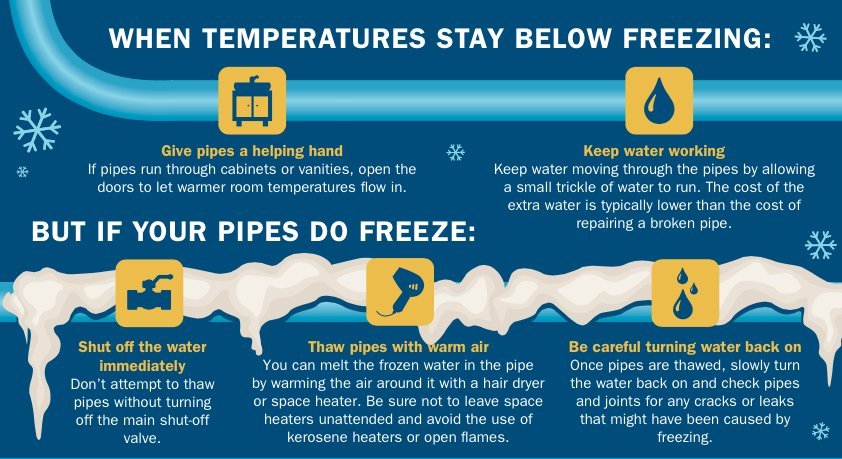A frozen pipe that hasn’t burst yet often reveals itself at a faucet: when you turn on the faucet and no water comes out or it has slowed to a trickle, there’s probably a blockage of ice somewhere in the line. It’s time take fast action:
- Shut off the water to the faucet locally or at the home’s main water shutoff valve.
- Open the faucet that is supplied by the frozen pipe; do this even if you don’t know where the blockage is.
- Identify the frozen pipe and locate the blockage: Follow the pipe back from the faucet to where it runs through cold areas, such as an exterior wall or unheated crawl space. Look for areas of the pipe that have frost or ice; it may also be slightly bulged or fissured.
When you find that the frozen—but not yet burst—pipe is behind a wall or ceiling, you’ve got a challenge on your hands. You have three options for thawing the pipe:
- Turn up the heat in the house and wait.
- Cut out a section of the wall or ceiling to access the frozen section of pipe, then thaw the pipe as an exposed pipe (How to Thaw an Exposed Frozen Pipe is explained below).
- Use an infrared lamp to help heat the wall section in front of where you believe the pipe is frozen. Infrared lamps are better than regular heat lamps because they pass through the air without heating it and will direct more energy to warm the wall and frozen pipe.
If the frozen pipe is exposed, you have several options for thawing it. Whichever remedy you use, heat the pipe from the faucet toward the frozen area. This allows water to flow out as the ice melts.
- Hair dryer: Usually the easiest and safest way to thaw a pipe. If the pipe is close to the wall, place a cookie sheet behind the pipe to help radiate heat onto the backside of the pipe.
- Heat lamp: You can use an infrared or incandescent heat lamp. As with a hairdryer, if the pipe is close to the wall, use a cookie sheet behind the pipe to help reflect heat onto the pipe.
- Portable heater: A small, powerful heater works great for warming pipes under a kitchen or vanity base cabinet. Direct the heater onto the frozen section of pipe. (Never leave the heater unattended)
- DO NOT use a blowtorch, kerosene or propane heater, charcoal stove, or another open flame device as these are a fire hazard and locate your master water shut-off valve.
If you try these and it does not work, contact your local plumber. Expert Plumbers at R&Z Plumbing in Toronto are available 24 hours a day 7 days a week to assist you with any plumbing issue you may have including fixing and repairing frozen pipes during this cold and freezing winter season. Contact R&Z Emergency Plumbing at (416)661-9393.


